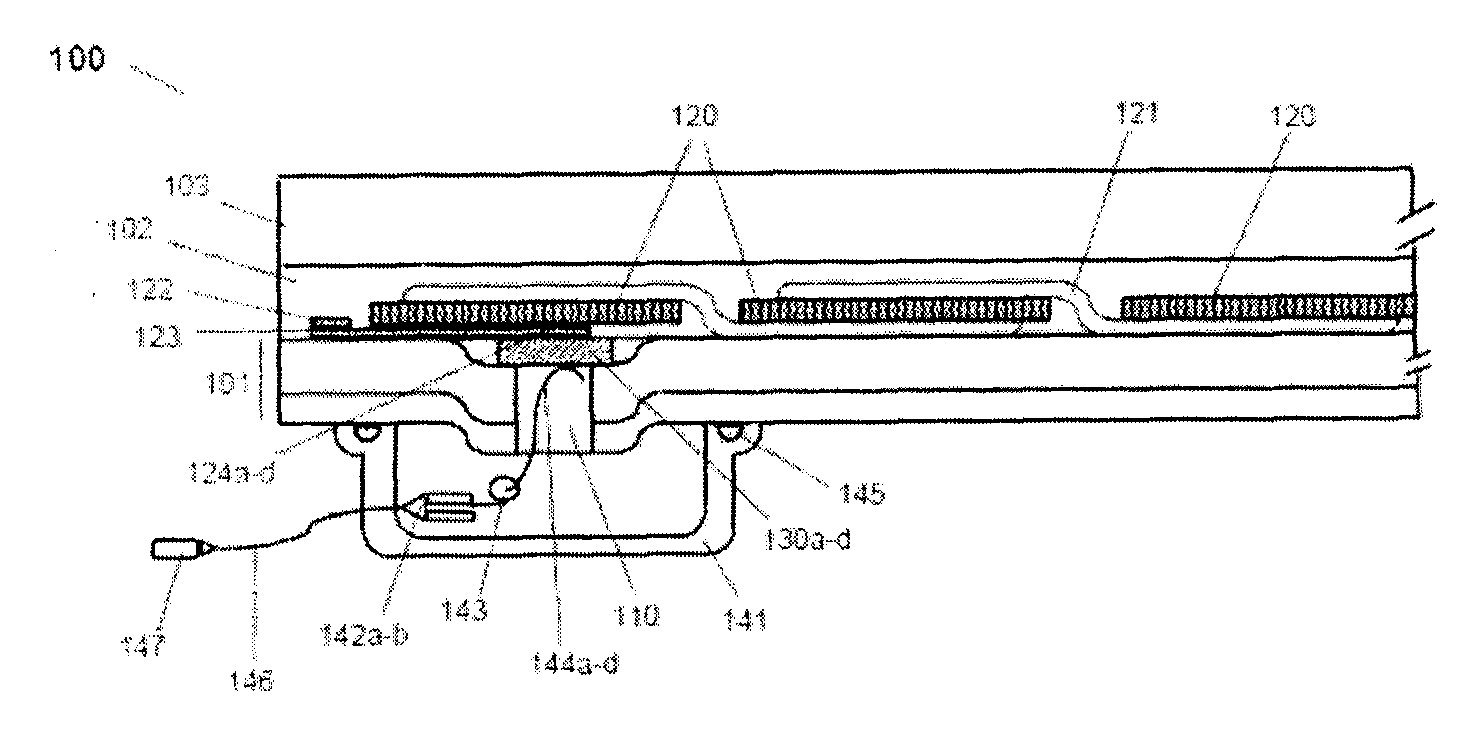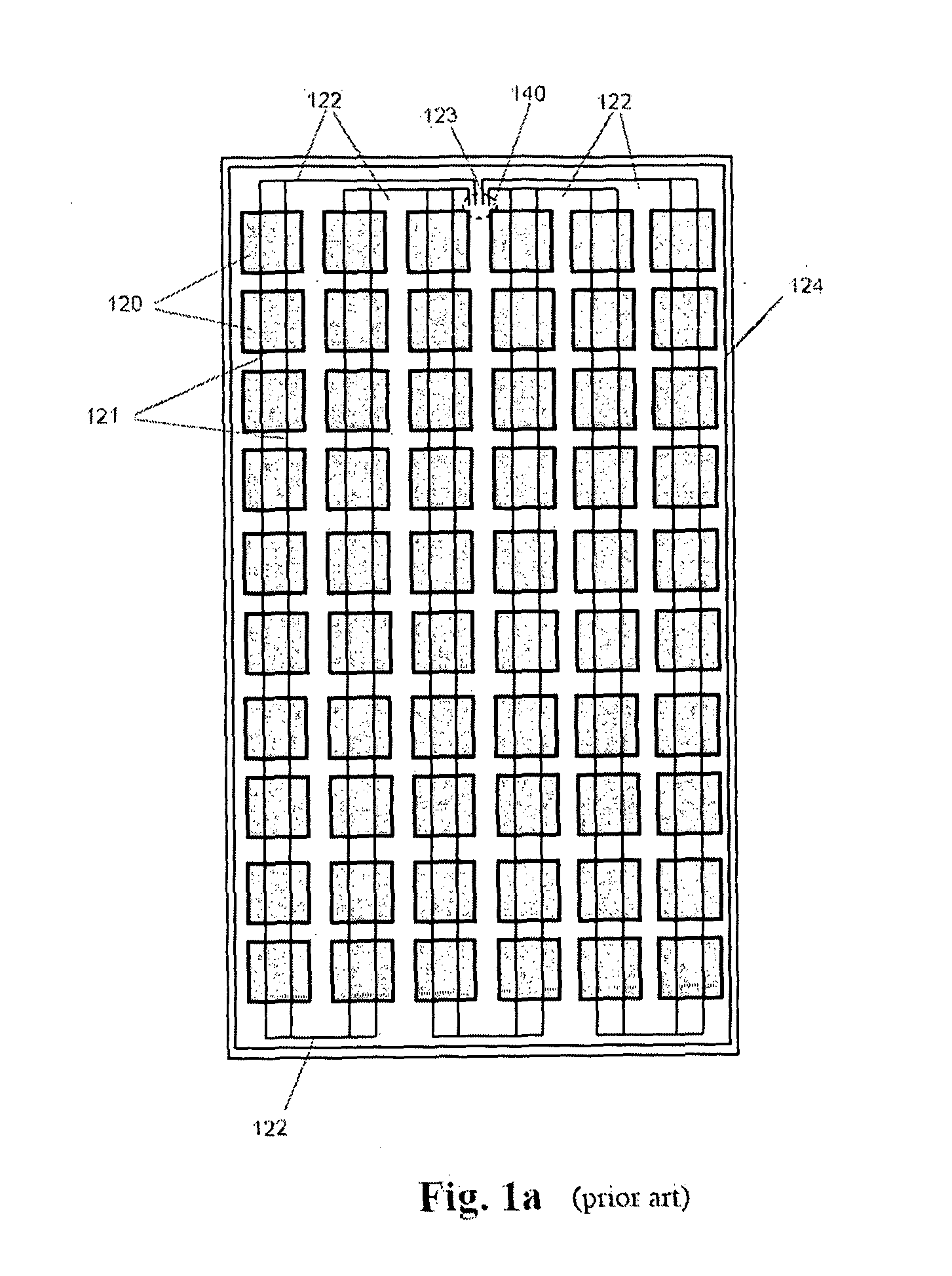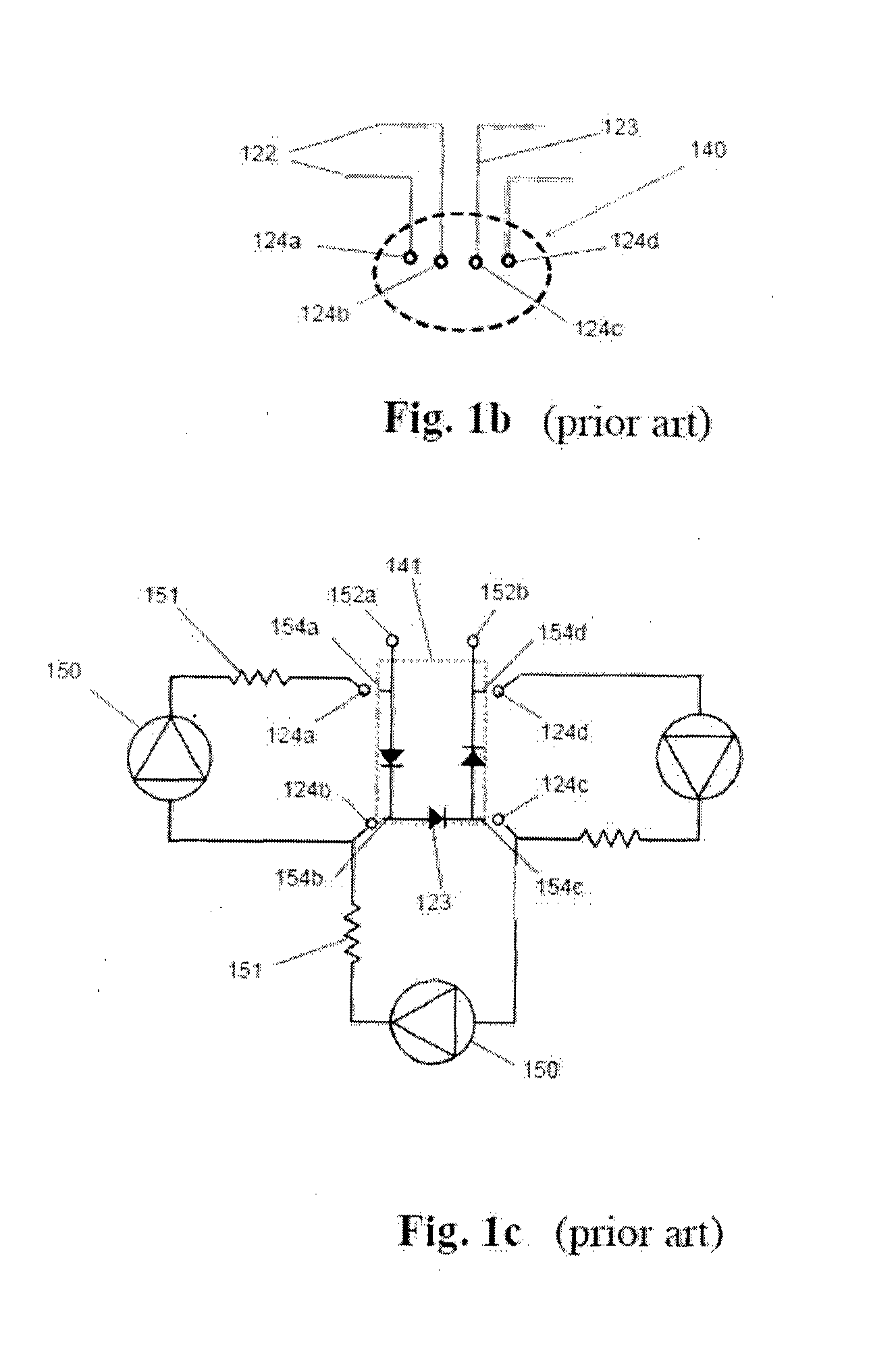Backsheet for photovoltaic panels with double contacting face conductive elements of the non-through type and assembly method
a photovoltaic panel and conductive element technology, applied in the field of photovoltaic panels, can solve the problems of insufficient or insufficient electrical contact, inability to meet the requirements of the circuit and/or the cell, and the junction box on the back of the photovoltaic panel is extremely critical, so as to facilitate the electrical connection of the terminal point, simplify the contact, and reduce the cost
- Summary
- Abstract
- Description
- Claims
- Application Information
AI Technical Summary
Benefits of technology
Problems solved by technology
Method used
Image
Examples
Embodiment Construction
[0059]The present invention describes a backsheet (10, 20) for photovoltaic panels (100, 200) with integrated conductive elements (130a-d) of the non-through type, with double contacting face (131, 132), for the simplified electrical connection of the front circuits to the back junction box (141); to this purpose a particular arrangement (110-2, 130a-d, 210-2) of the backsheet (10, 20) is provided to realize a stable and resistant conductive bump contact which is exposed at the back and is reachable through a hole (110, 210) for the direct contact of said junction box (141). The proposed solution is suitable both for panels (100) consisting of solar cells (120) of crystalline silicon of the standard type (FIG. 2d), having the two faces of opposite electrical polarity, and for panels (200) consisting of solar cells (220) of crystalline silicon of the back-contact type (FIG. 3d) having both electrical polarities on the shadow face of each cell and electrically connected by the conduct...
PUM
 Login to View More
Login to View More Abstract
Description
Claims
Application Information
 Login to View More
Login to View More - R&D
- Intellectual Property
- Life Sciences
- Materials
- Tech Scout
- Unparalleled Data Quality
- Higher Quality Content
- 60% Fewer Hallucinations
Browse by: Latest US Patents, China's latest patents, Technical Efficacy Thesaurus, Application Domain, Technology Topic, Popular Technical Reports.
© 2025 PatSnap. All rights reserved.Legal|Privacy policy|Modern Slavery Act Transparency Statement|Sitemap|About US| Contact US: help@patsnap.com



